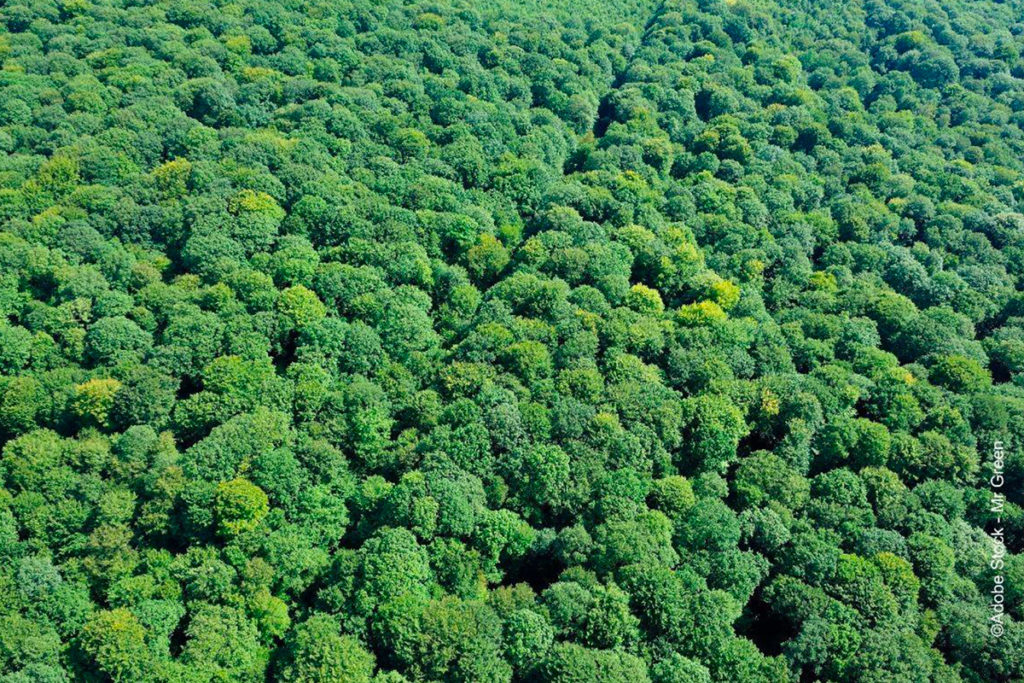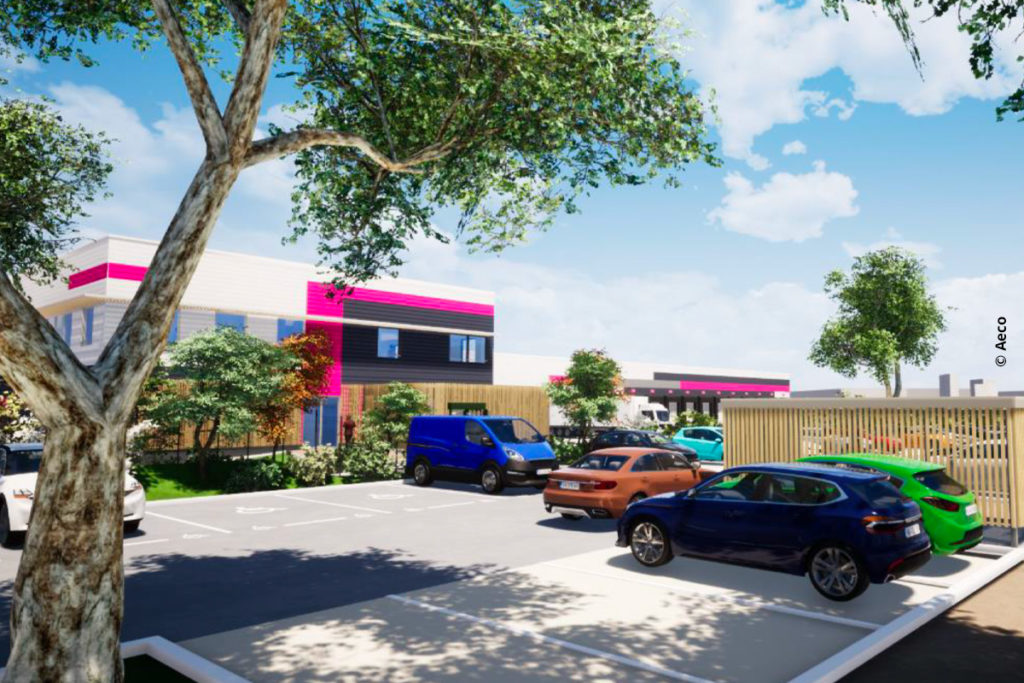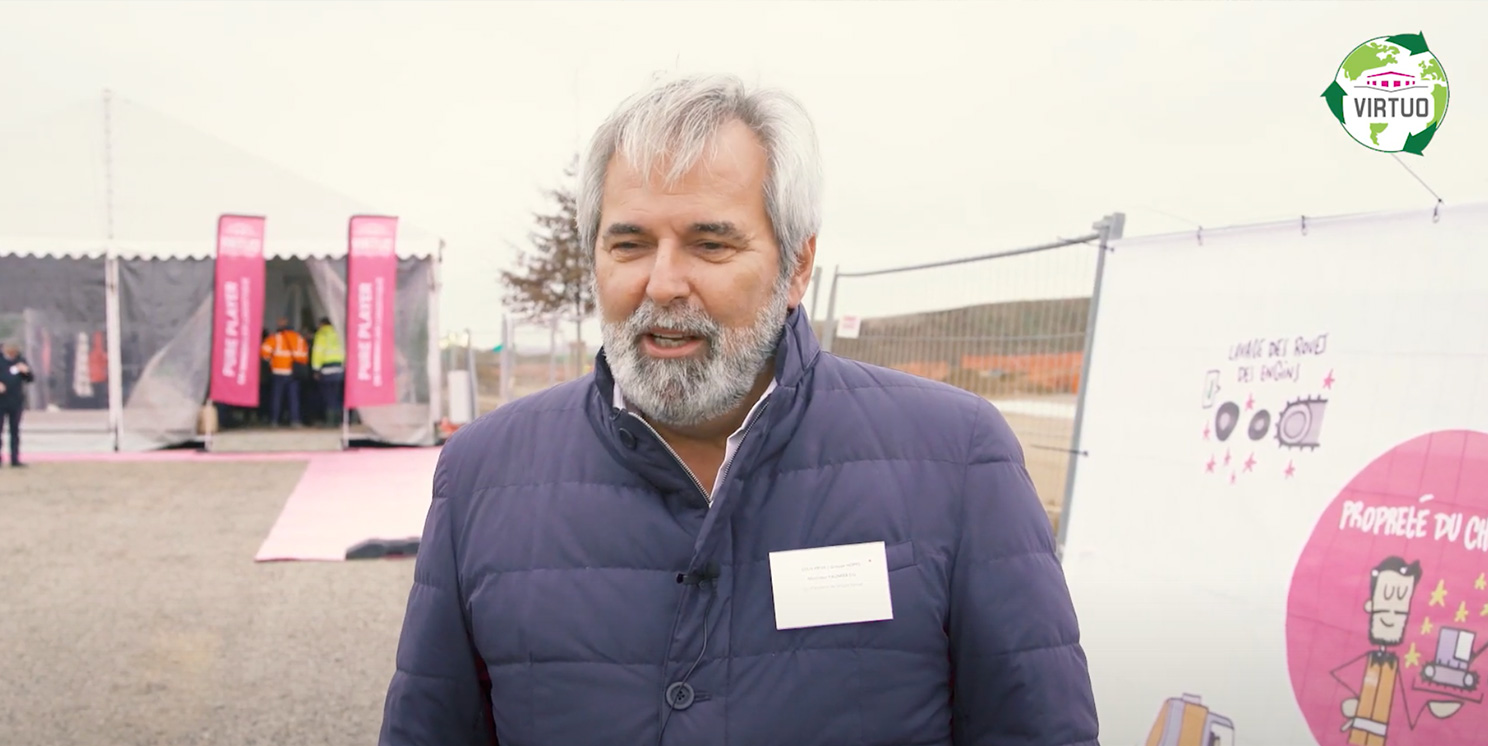Colis Privé & Virtuo: When two engaged entrepreneurs meet.
Colis Privé, a Hopps Group subsidiary specialized in home and pick-up points parcel delivery has turned to Virtuo for the construction of its state-of-the-art distribution center located in Compans, north of Paris, in a strategic location. Eric Paumier, President of Hopps Group, describes how this collaboration between both companies is both virtuous and sustainable.
Work towards forestry projects benefiting from the Low-Carbon Label

Virtuo has been committed to reforestation since 2021 and plans to round out its sustainable development approach around farming initiatives.
These actions are part of its project in Compans (77).
Virtuo’s sustainable development approach translates into numerous actions, ranging from designing low-energy logistics platforms to BREEAM certifications and the Biodiversity Labels. In order to implement these actions the company is now financing two forestry projects that have been awarded the Low-Carbon Label.
These carbon offset projects are carried out in France and initiated by the company Reforest’Action whose mission is “to protect forests in France and around the globe in the face of climate change and the erosion of biodiversity”. Reforest’Action selects and supports forestry projects, backed by funding from citizens or companies such as Virtuo.
Store more than 10,000 TeqCO2 over the next 30 years
Virtuo invested in two projects: one in Auzouville sur Ry, in Seine-Maritime, on a 31-hectare agricultural wasteland connected to the Bois des Lesques in Normandy, of which 24.5 hectares will be wooded. A total of 6,250 TeqCO2 will be sequestered over 30 years. Meanwhile, the logistics real estate specialist is also active in Ychoux (Landes), restoring a stand of trees destroyed by a fire in 2019.
Located in the Landes de Gascogne forest, this 43-hectare area will be replanted mainly with maritime pines, and with birch and tauzin oaks in more humid areas where possible. This project will sequester 4,588 Teq CO2 over 30 years. In total, Virtuo will contribute to the storage of 10,838 TeqCO2 over the next 30 years.
AECO: How to fit the project into its environment

Where does the sun come from? What are the dominant winds, the main features of the landscape? What are the flows? What are the ecological and topographical conditions? Many questions that need to be answered before a logistics real estate project can begin, so as to ensure that the site and its program are in sync.
To understand how the Compans project was thought out, we met with the architecture firm, Aeco.
How do you get started on an architectural project dedicated to logistics real estate?
Faced with current and future challenges, we must consider how to insert the project into its natural, social, urban and economic environment and the possible changes. In order to proceed in a sustainable way, in accordance with the existing ecosystem, we are building a factual data base so that a unique project can emerge. The objective is to prove that working with logistic spaces responsibly is not only possible, but necessary, to respect the future of the common good.
Its 8 m high, 70 x 210 m main nave meets the technical and construction specifications of a courier service with a photovoltaic roof near an airport. Designed to reduce the carbon footprint—a key concern for Virtuo—the office complex was designed to be compact, thereby limiting its energy footprint, with facades using bio-based materials.
To counteract the heat island effect, the facades facing south/southwest are painted in very light colors that reflect the radiation, thus reducing overheating in summertime. Conversely, the colors on the north and east sides are darker to limit the temperature drop of the building envelope in winter.
How did you work on the landscape of the V.Park Compans?
A number of factors were considered: the proximity to the airport, the landscape, the winds, the sun, the people, the workflow… V.Park Compans is located on a former agricultural meadow where a large part of the stripped land is re-used in merlons, micro-landscapes and undulations. This allows to cut the prevailing winds and create sheltered areas for an orchard and a beekeeping area.
We aimed to transform the project into a cool zone by adding vegetation to increase evapotranspiration and refresh the site in a natural way, especially in the vicinity of the staff parking lot, where the parking spaces are both permeable, to promote rainwater infiltration and light-colored, to increase the Albedo effect.
We also plan to set up a water system made up of valleys and landscaped basins throughout the site to encourage the redevelopment of local biodiversity in conjunction with the neighboring plots of land outside, generally in Spring, in order to confirm that we have obtained the BiodiverCity label.

